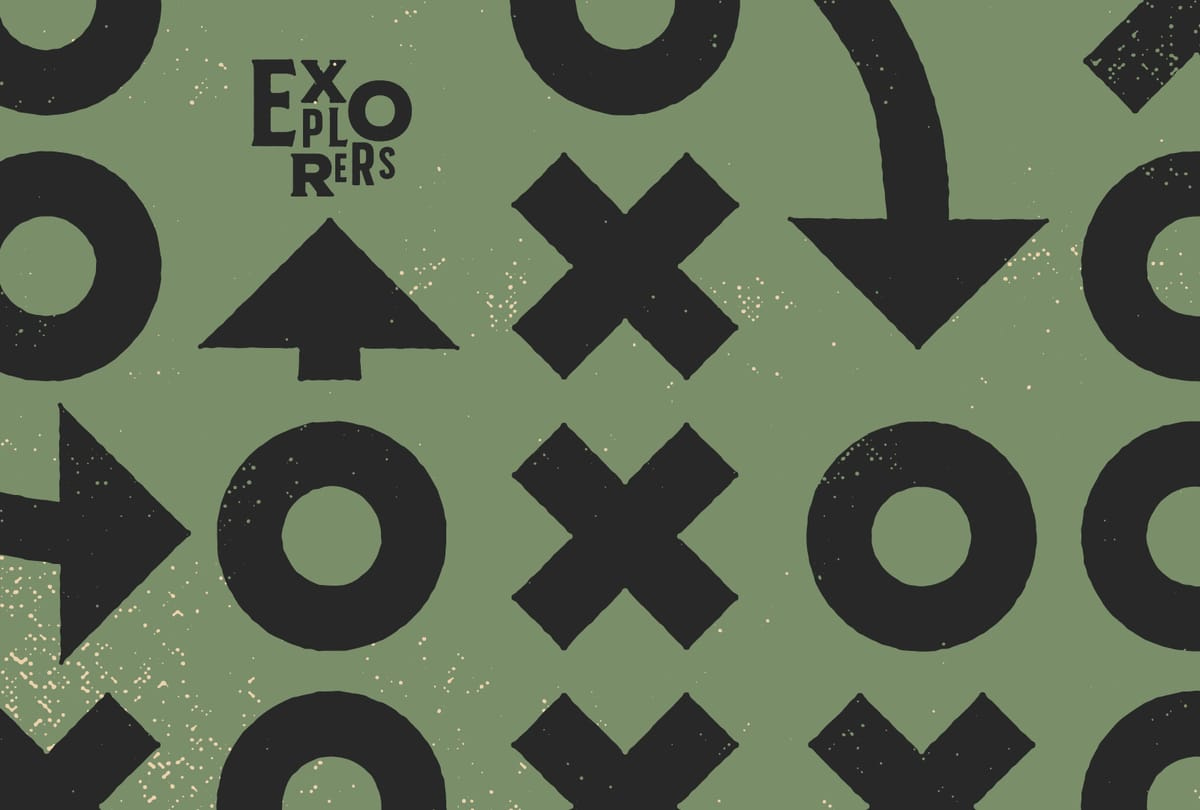General Design 101 (Explorers' Method)
How to design games and everything else in five steps.
First, there are many kinds of design and therefore many ways to design. Let's not tangle with that. Instead, let's focus on designing, and wrestle with something much harder—what makes a design feel good? Design is subjective. There are objective metrics, but the thing that makes design good or transcendent—makes it art—is subjective.
Subjective but not arbitrary.
Design is a practice about intention. It can be a book cover, a logo, or a game system. Either way, the designer designs by making decisions. They navigate, problem-solve, and explore ways to execute an idea, concept, or goal. This can be small, like deciding the size of your type, picking a color scheme, or deciding whether to notate the six-sided die d6 or 1d6. It can also be big, like choosing the overall art direction, crafting a voice and tone, or picking a game system.
In the end, all of these decisions are relative. Any decision could be good until we judge it within its context. For the designer, that context is their intention. What do they want the design to do, say, and become?
Design Process Summary
1. Find your creative concept.
2. Collect and combine inspiration.
3. Test your work by asking "why?"
4. Balance the order and chaos.
5. Rinse and repeat.
Want to read more?
Explorers Design migrated off Substack in early 2024. If you want to support my work, you can find me on the all-new website by clicking the button below. It’s all the content you love with a few improvements.
Until then, never stop exploring!



